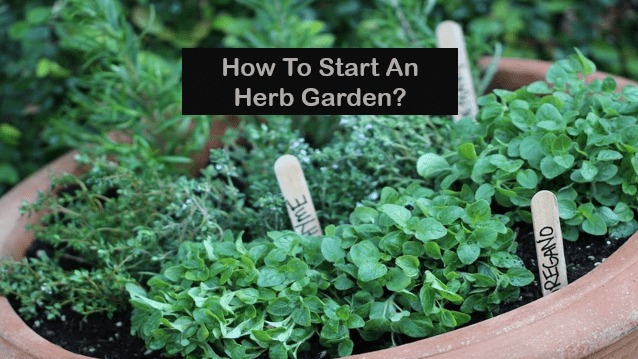How To Start An Herb Garden?
Are you a cooking enthusiast who loves the idea of having fresh herbs at your fingertips? Or perhaps you’re simply looking to add some greenery to your outdoor space. Starting an herb garden is an excellent way to achieve both goals. In this guide, we’ll walk you through the steps to kickstart your own herb garden, ensuring that you have a bountiful supply of fresh herbs for your culinary adventures.

Choose the Perfect Location
The first step in starting your herb garden is to select the ideal location. Most herbs thrive in sunlight, so find a spot in your garden that receives at least 6 hours of direct sunlight each day. Herbs like basil, rosemary, and thyme especially love the sun, so make sure they get their fair share.
Select Your Herbs
Now, it’s time to choose the herbs you want to grow. Consider your culinary preferences and the climate in your area. Some herbs, like basil, parsley, and mint, are perfect for beginners and are readily available as seedlings in nurseries. Others, such as cilantro and dill, can be started from seeds directly in your garden. Make a list of your favorites and plan accordingly.
Prepare the Soil
Before planting, you need to prepare the soil to ensure your herbs have the best possible growing conditions. Remove any existing vegetation from your chosen garden spot. To enhance soil fertility, add compost or well-rotted manure. Work a 2-3 inch layer of compost into the soil using a rototiller or a shovel. Do this at least a month before planting to give the soil time to settle.
Plant Your Herbs
It’s time to get your hands dirty! Follow the instructions on the seed packets or plant labels for each herb. Planting depth and spacing can vary between different herbs, so make sure you follow these guidelines carefully. Generally, herbs should be spaced about 12-24 inches apart to allow for healthy growth.
Water Wisely
Proper watering is essential for your herbs to thrive. Most herbs prefer well-draining soil, so be cautious not to overwater. A good rule of thumb is to water your herbs when the top inch of soil feels dry to the touch. Ensure that the soil remains consistently moist but not waterlogged. Remember, it’s better to water deeply and less frequently than to water lightly and often.
Harvest with Care
Once your herbs reach a height of 6 to 8 inches, you can start harvesting. Herbs like basil, cilantro, and parsley benefit from regular pruning. Snip the leaves or stems as needed, but avoid cutting off more than one-third of the plant at a time. Harvesting regularly encourages healthy growth and ensures you have a continuous supply of fresh herbs.
Conclusion
Starting your herb garden is an exciting journey that connects you with nature and enhances your culinary creations. Whether you’re growing a windowsill herb garden or transforming your backyard into a lush herb oasis, the satisfaction of harvesting your own fresh herbs will make it all worthwhile.
Remember that these steps provide a general guideline, but the specific requirements for your herb garden may vary depending on your location and the herbs you choose to grow. With a little care and attention, your herb garden will flourish, providing you with an abundance of flavors to elevate your cooking.
FAQ’s
What are the easiest herbs to grow?
Some of the easiest herbs to grow include basil, chives, mint, parsley, rosemary, and thyme. These herbs are relatively forgiving and can tolerate a variety of conditions.
Can I grow herbs indoors?
Yes, you can grow herbs indoors. However, you will need to choose herbs that are suited to indoor growing conditions. Some good options include basil, chives, mint, oregano, parsley, and rosemary.
How do I know when to harvest herbs?
The best time to harvest herbs is when they are young and tender. The leaves should be bright green and free of blemishes. To harvest, simply snip off the leaves or stems as needed.
How do I store herbs?
Herbs can be stored fresh, dried, or frozen. Fresh herbs should be stored in the refrigerator for up to 5 days. Dried herbs can be stored in an airtight container in a cool, dark place for up to 1 year. Frozen herbs can be stored in the freezer for up to 6 months.
What are some common pests and diseases that affect herbs?
Some common pests that affect herbs include aphids, spider mites, and whiteflies. Some common diseases that affect herbs include powdery mildew, rust, and botrytis.
Here are some additional tips for starting an herb garden:
Start small. It is better to start with a small herb garden and expand it as you gain experience.
Do your research. Learn about the different types of herbs and their growing requirements.
Be patient. It takes time for herbs to establish themselves. Don’t get discouraged if your herbs don’t do well at first.
Have fun! Growing herbs can be a rewarding hobby. Enjoy the process of learning about herbs and watching them grow.
